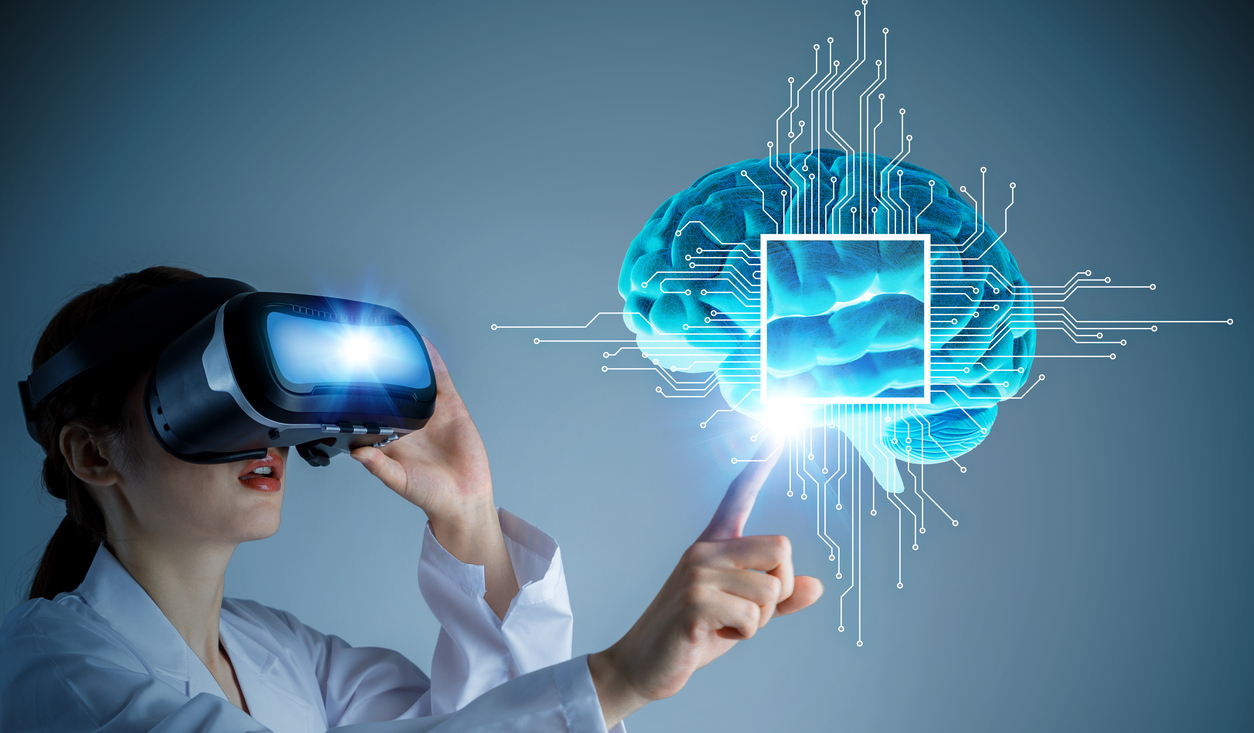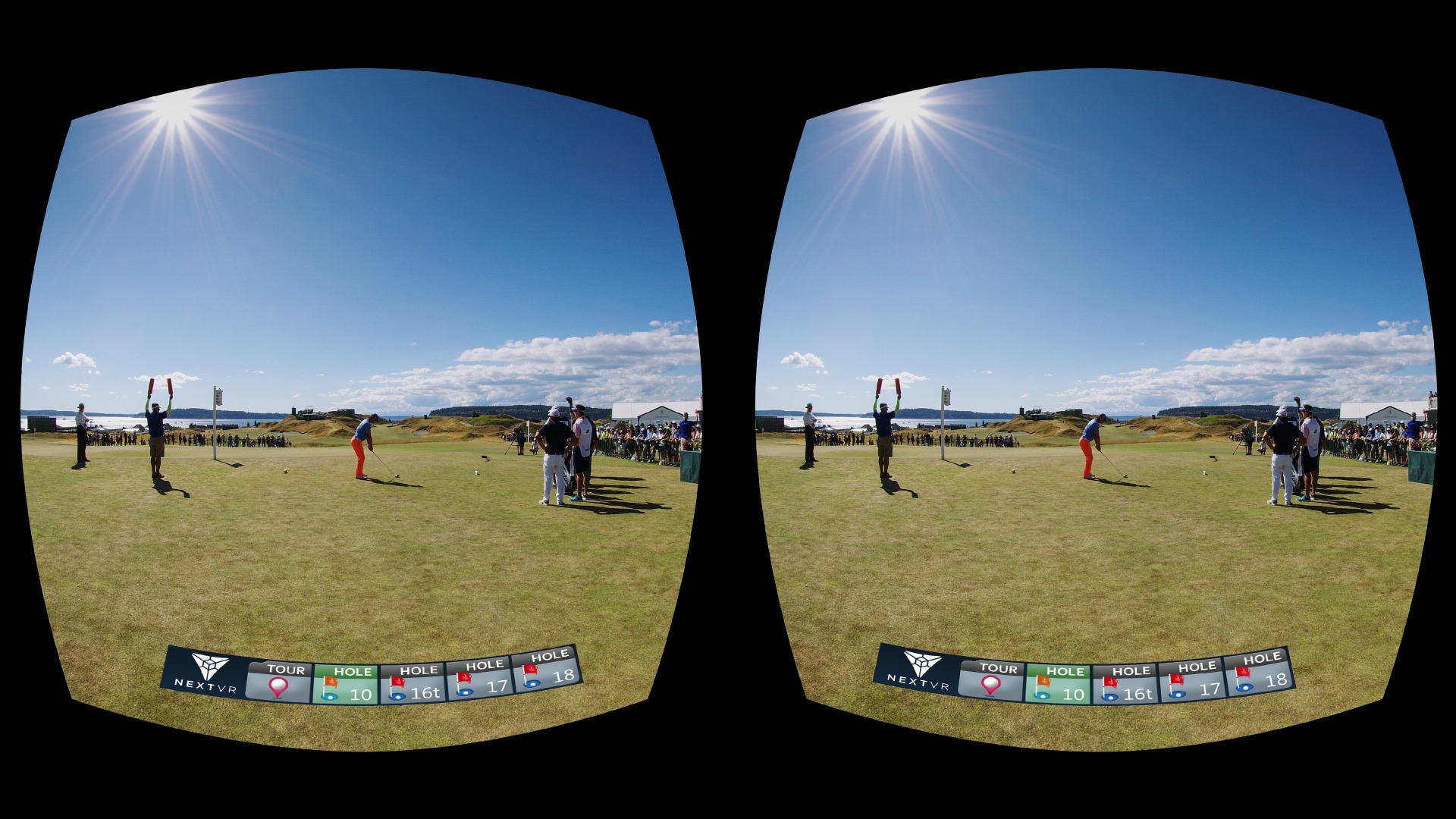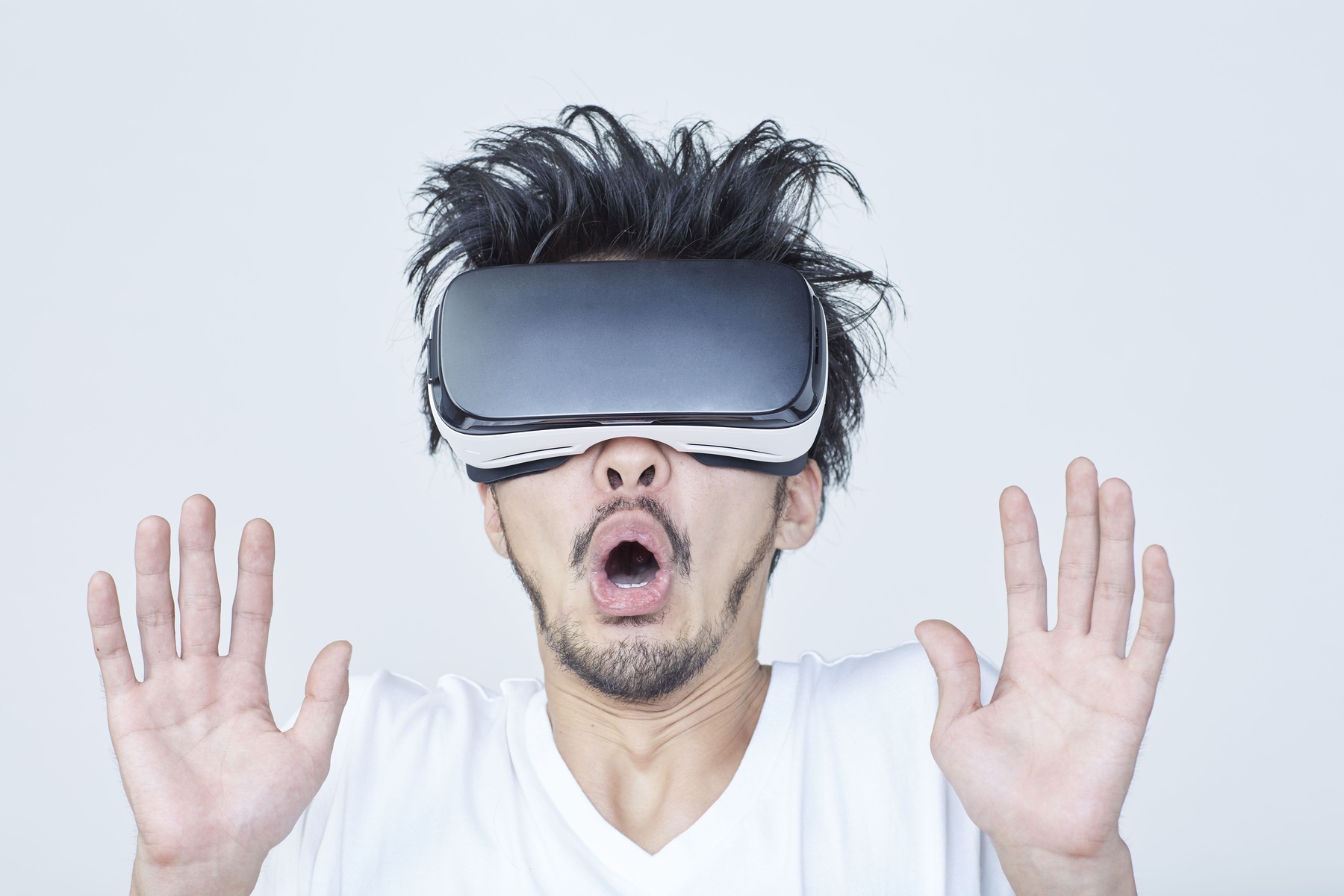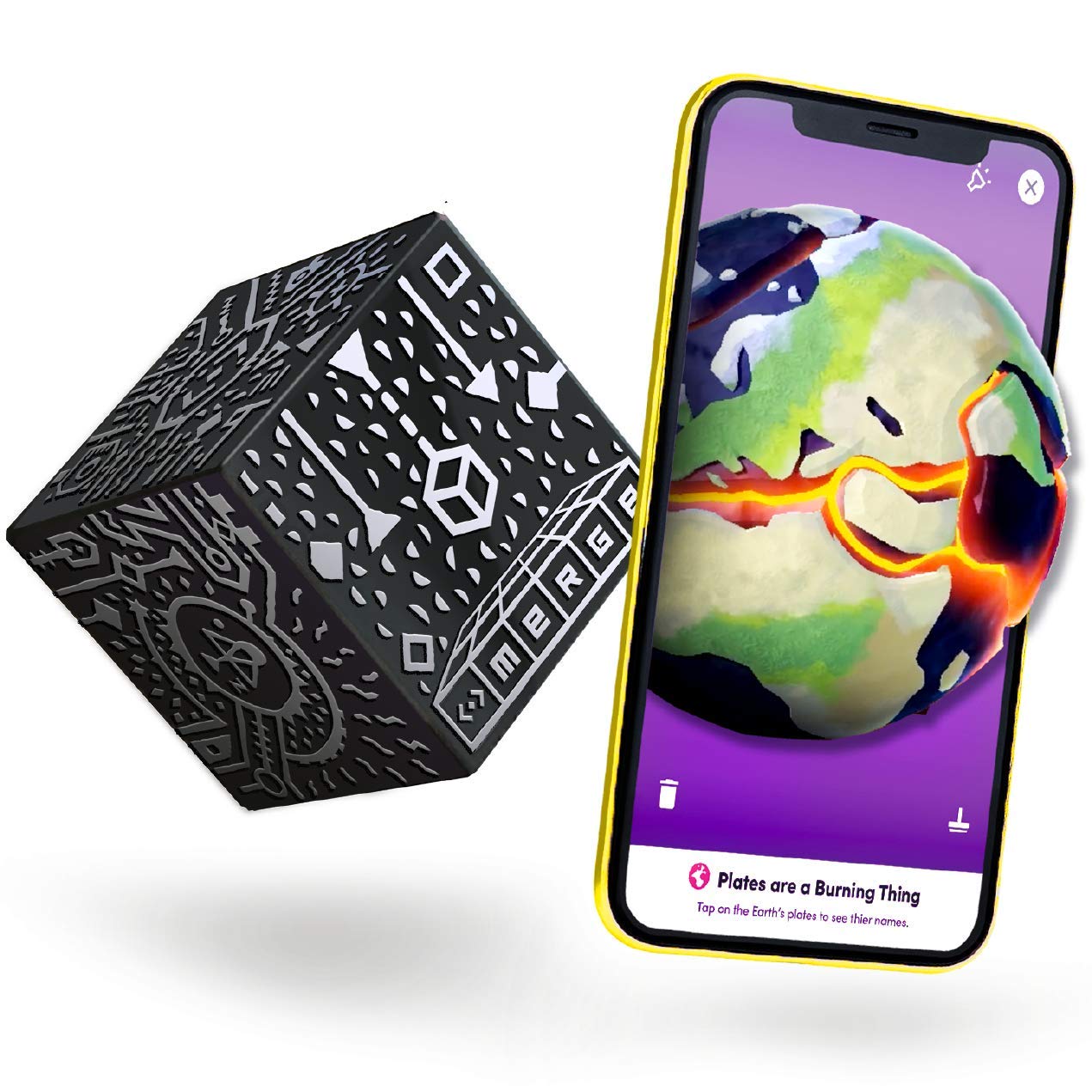Introduction
Virtual reality (VR) has rapidly emerged as a groundbreaking technology that has the power to transform how we experience and interact with the digital world. It has the ability to transport us to virtual realms, allowing us to envision and engage with environments and scenarios that were previously unimaginable. As this immersive technology continues to evolve and become more accessible, it raises intriguing questions about its impact on the human brain and cognitive processes.
In this article, we will explore the fascinating relationship between virtual reality and the brain. We will delve into how the brain responds to the simulated environments of virtual reality, and how this affects our sensory perception, cognition, and emotions. Additionally, we will explore the social implications of virtual reality and highlight potential risks and precautions associated with its use.
One of the fundamental aspects of virtual reality is its ability to stimulate our senses and trick our brain into perceiving a virtual environment as real. By merging cutting-edge technologies such as high-resolution displays, motion tracking, and spatial audio, VR creates a sense of presence that can transport us to new, immersive worlds. It allows our brain to experience and interact with these virtual environments as if they were real, blurring the boundary between the physical and digital realms.
Understanding how the brain responds to virtual reality is crucial to fully harnessing the potential of this technology. By studying the neural mechanisms involved in perception and cognition during VR experiences, researchers can unlock insights into how our brain processes and adapts to simulated environments. Such knowledge can pave the way for advancements in fields like education, therapy, gaming, and simulation, revolutionizing the way we learn, heal, and entertain ourselves.
In the following sections, we will delve deeper into the specific ways in which virtual reality impacts our sensory perception, cognition, emotions, and social interactions. We will examine the areas where virtual reality excels and the potential challenges that need to be addressed for its widespread adoption. By gaining a comprehensive understanding of the brain’s response to virtual reality, we can navigate the future of this transformative technology and unlock its vast potential.
The Basics of Virtual Reality
To fully appreciate the impact of virtual reality (VR) on the brain, it is essential to understand the fundamental principles that govern this immersive technology. Virtual reality refers to computer-generated environments that simulate a realistic sensory experience, typically through the use of specialized headsets, controllers, and sensor systems.
At its core, virtual reality relies on the principle of presence. Presence is the sensation of being physically present in a virtual environment, despite actually residing in the physical world. Achieving a high level of presence is crucial for a truly immersive and convincing VR experience.
To create a sense of presence, VR utilizes a combination of technologies. Head-mounted displays (HMDs) are worn on the head and display virtual content directly to the user’s eyes. These displays usually consist of two high-resolution screens, one for each eye, providing a stereoscopic 3D effect and a wide field of view.
In addition to visual immersion, VR systems often incorporate spatial audio to enhance the sense of presence. Spatial audio technology recreates realistic soundscapes by mapping virtual sound sources in relation to the user’s position. This helps to create a realistic auditory experience that further enhances immersion.
To enable interaction and movement within virtual environments, VR systems employ motion tracking and controllers. Motion tracking detects the user’s movements and translates them into the virtual world, allowing for a natural and intuitive experience. Controllers provide users with a tangible interface, enabling them to interact with virtual objects and manipulate the virtual environment.
Virtual reality can be classified into two main types: fully immersive VR and augmented reality (AR). Fully immersive VR involves the user being completely immersed in a virtual environment, with minimal or no perception of the physical world. Augmented reality, on the other hand, overlays virtual elements onto the real world, blending digital content with the user’s surroundings.
While virtual reality has gained significant attention in gaming and entertainment, its applications extend far beyond that. VR has been employed in fields such as education, healthcare, architecture, and training simulations, offering immersive and interactive experiences that can enhance learning, therapy, design, and performance.
Understanding the basic elements of virtual reality sets the stage for exploring how this technology influences the brain. By immersing users in virtual environments and engaging multiple senses simultaneously, virtual reality has the potential to profoundly shape our perception, cognition, emotions, and social interactions.
Understanding the Brain’s Response to Virtual Reality
Virtual reality (VR) creates a unique experience by immersing users in simulated environments. To fully grasp the impact of VR on the brain, it is essential to understand how our brain processes and responds to these artificial realities. By studying the neural mechanisms involved, researchers have gained valuable insights into the brain’s response to virtual stimuli.
One key aspect of the brain’s response to virtual reality is the concept of neuroplasticity. Neuroplasticity refers to the brain’s ability to reorganize itself and form new neural connections in response to experiences and stimuli. VR can harness this capability by providing rich and diverse sensory input, stimulating various regions of the brain and promoting neural adaptation and rewiring.
Neuroscientists have used advanced imaging techniques, such as functional magnetic resonance imaging (fMRI), to observe the brain’s activity during VR experiences. These studies have revealed that VR activates similar brain regions as real-world experiences. For example, when navigating through a virtual environment, the brain’s spatial navigation and recognition areas, such as the hippocampus, are engaged.
Moreover, the brain’s sensory-processing regions respond to virtual stimuli as if they were real. For instance, when experiencing virtual touch or manipulating virtual objects, the somatosensory cortex, responsible for processing tactile information, becomes activated. This suggests that VR can effectively elicit sensory responses, making the virtual experience feel vivid and authentic.
Another interesting aspect is the brain’s response to virtual social interactions. When engaging in social interactions within virtual environments, the brain’s social processing regions, such as the prefrontal cortex and the mirror neuron system, are activated. This indicates that the brain recognizes and responds to virtual social cues, enabling users to have meaningful social experiences in the virtual realm.
The brain’s response to VR also involves cognitive processes such as attention, memory, and decision-making. Studies have shown that VR can enhance attentional focus by immersing users in a captivating virtual world, reducing distractions from the external environment. Memory recall can also be improved through the spatial and contextual cues provided by VR, facilitating better information retention and retrieval.
Furthermore, VR can influence emotional responses. The brain’s limbic system, which is responsible for emotions and motivation, can be activated during VR experiences. This can result in heightened emotional engagement, making virtual experiences more impactful and memorable. VR has been explored as a therapeutic tool for treating anxiety, phobias, and post-traumatic stress disorder, leveraging its ability to evoke and modulate emotional states.
Understanding how the brain responds to VR is essential for optimizing VR experiences and harnessing its potential benefits. By combining knowledge from neuroscience, psychology, and technology, we can create virtual experiences that are not only visually immersive but also neurologically engaging, enhancing learning, therapy, and entertainment.
The Impact of Virtual Reality on Sensory Perception
One of the most remarkable aspects of virtual reality (VR) is its ability to manipulate our sensory perception, creating the illusion of being present in a different environment. By immersing users in artificially generated sensory stimuli, virtual reality can have a profound impact on how we perceive and interact with the virtual world. Understanding the effects of VR on sensory perception is crucial for designing immersive experiences and harnessing the full potential of this technology.
Visual perception is greatly influenced by virtual reality. Through high-resolution displays and stereoscopic rendering, VR creates a sense of depth and three-dimensionality that mimics real-world vision. This allows users to perceive virtual objects as tangible and interact with them in a more intuitive manner. Additionally, visual cues such as lighting, shadows, and textures are meticulously designed in VR environments to enhance realism and create a sense of presence.
Auditory perception is another area greatly impacted by virtual reality. Spatial audio technologies are used to recreate realistic soundscapes, providing users with a 360-degree auditory experience. This immersive sound design not only enhances realism but also helps to localize virtual objects and events. By accurately simulating sound direction and intensity, VR can create a more convincing and immersive environment.
Tactile perception, although not directly experienced in its true form, can also be influenced in virtual reality. Haptic feedback systems, such as gloves or controllers with vibration and force feedback, can provide users with a sense of touch and pressure when interacting with virtual objects. These haptic cues help bridge the gap between the virtual and physical worlds, enhancing the overall sensory experience.
Another fascinating aspect is how VR can alter our proprioceptive perception. Proprioception is our ability to sense the position and movements of our own body. In VR, users can embody different avatars or characters, and through head and body tracking, their movements and posture can be accurately represented in the virtual world. This creates a strong sense of presence and embodiment, enabling users to feel as if they are physically present in the virtual space.
Virtual reality can also impact our vestibular perception, which relates to our sense of balance and motion. By simulating different movements and environments, VR can elicit sensations of motion and height, mimicking experiences that might not be easily accessible or safe in the real world. However, it is important to note that not all individuals may have the same tolerance for virtual motion, and some may experience discomfort or motion sickness.
Understanding the impact of virtual reality on sensory perception allows developers and designers to create more immersive and engaging experiences. By leveraging the power of visual, auditory, and tactile cues, and carefully considering aspects such as embodiment and motion simulation, VR can transport users to virtual worlds that feel remarkably real. As VR technology continues to advance, we can expect even more refined and nuanced sensory experiences in the future.
Cognitive Effects of Virtual Reality
Virtual reality (VR) is not only a visual and sensory experience; it also has profound effects on our cognitive processes. The immersive nature of VR can influence attention, memory, problem-solving, and learning in unique and exciting ways. Understanding the cognitive effects of VR is essential for optimizing its applications in education, training, therapy, and other fields.
One of the key cognitive benefits of VR is its ability to enhance attentional focus. When immersed in a virtual environment, users are often fully engaged and less distracted by real-world stimuli. This focused attention can lead to improved concentration, task performance, and information retention. By eliminating external distractions, VR can create an ideal environment for learning and skill acquisition.
Memory recall is another cognitive process that can be impacted by VR. The spatial and contextual cues provided by virtual environments can facilitate better memory encoding and retrieval. For example, in a virtual training scenario, the association of a specific task with the environment can enhance memory recall and transfer of learning to real-world situations. VR can also recreate familiar or challenging scenarios, aiding in memory consolidation and skill retention.
Problem-solving abilities can be enhanced through the use of virtual reality. Immersive and interactive VR experiences can present users with complex and dynamic challenges that require critical thinking and decision-making skills. The ability to experiment, iterate, and receive immediate feedback in a safe and controlled virtual environment can foster creative problem-solving strategies and build resilience in the face of difficult tasks or scenarios.
Furthermore, VR has the potential to improve spatial cognition. Virtual environments can provide rich spatial information that allows users to develop and refine spatial awareness, navigation skills, and mental mapping. For example, VR can be used to simulate architectural spaces, enabling architects and designers to explore and assess their designs before construction. Additionally, VR can help individuals with spatial impairments or neurological conditions to improve their spatial cognition through targeted training exercises.
The cognitive benefits of VR extend to learning and education. By creating immersive and interactive experiences, VR can increase student engagement and motivation, leading to enhanced learning outcomes. Complex concepts can be visualized and experienced in three-dimensional space, enabling a deeper understanding and comprehension. VR can also offer personalized learning experiences, adapting the content and difficulty to individual needs, ensuring a more efficient and effective learning process.
It is important to note that while VR can offer cognitive benefits, individual differences in cognitive abilities and preferences should be considered. Not all individuals may respond the same way to VR experiences, and the impact on cognitive processes may vary. Furthermore, ethical considerations should be taken into account when implementing VR in sensitive areas such as therapy or cognitive rehabilitation.
Overall, virtual reality has the potential to revolutionize how we think, learn, and solve problems. By harnessing its immersive capabilities and combining them with cognitive science principles, we can unlock new avenues for enhancing cognition, training the mind, and expanding our cognitive abilities in ways we couldn’t have imagined before.
Emotional Responses to Virtual Reality
Virtual reality (VR) has the ability to evoke powerful emotional responses by creating immersive and realistic virtual experiences. By engaging our senses and emotions, VR can elicit a wide range of emotional states, from excitement and joy to fear and awe. Understanding the emotional impact of VR is crucial for designing experiences that are emotionally engaging, therapeutic, and meaningful.
One of the key factors that contribute to the emotional impact of VR is the sense of presence it creates. When immersed in a virtual environment, users often feel as though they are physically present in that world. This sense of presence can enhance emotional responses by blurring the line between reality and virtuality, allowing users to feel deeply connected to the virtual experience.
Virtual reality has been particularly effective in evoking fear and anxiety. By simulating thrilling or dangerous situations, such as heights, horror scenarios, or phobia exposures, VR can induce strong emotional reactions. Such experiences offer a safe and controlled environment to face and manage fears, making VR a valuable tool in exposure therapy and treating anxiety-related disorders.
On the other end of the emotional spectrum, VR can also create experiences that evoke joy, excitement, and happiness. Immersive games, virtual travel, or social interactions can elicit positive emotions and provide a sense of adventure, exploration, and connection. VR can transport individuals to new worlds, allowing them to engage in activities and experiences they may not have access to in their physical reality.
Virtual reality can also elicit awe and wonder. By immersing users in awe-inspiring virtual environments, such as natural landscapes, historical sites, or cosmic scenes, VR can evoke a sense of wonder and appreciation for the world around us. These emotionally powerful experiences can foster a sense of perspective and connection, leading to feelings of awe and inspiration.
Another intriguing aspect of VR is its potential to influence empathy and emotional understanding. By simulating first-person perspectives and allowing users to embody different avatars or characters, VR can foster empathy and emotional resonance. This has significant implications for promoting empathy and understanding in areas such as education, healthcare, and social advocacy.
It is important to note that while VR has the potential to evoke strong emotional responses, precautions should be taken to ensure the emotional well-being of users. Some individuals may be more susceptible to emotional overload or negative emotional experiences in virtual environments. Ethical considerations should guide the design and implementation of VR experiences, taking into account the potential impact on emotional well-being.
In summary, virtual reality has the power to evoke a wide range of emotional responses due to its immersive nature and the sense of presence it creates. By providing experiences that elicit fear, joy, awe, and empathy, VR has the potential to transform how we connect with our emotions and engage with virtual worlds. As the technology continues to advance, we can expect even more emotionally powerful and impactful experiences through VR.
Social Implications of Virtual Reality
Virtual reality (VR) has profound social implications, affecting the way we interact, communicate, and connect with others. By creating immersive virtual environments, VR has the potential to revolutionize social experiences, both in individual and group settings. Understanding the social implications of VR is crucial for harnessing its benefits and addressing potential challenges.
One of the key areas where VR can have a significant impact is in remote collaboration and communication. VR allows people in different locations to come together in shared virtual spaces, enabling more immersive and realistic interactions. This has the potential to transform the way remote teams work, breaking down geographical barriers and fostering collaboration in a way that feels almost as if everyone is present in the same room.
Virtual reality also presents new opportunities for socializing and entertainment. VR social platforms and multiplayer games enable users to interact and engage with each other in virtual worlds. Whether it’s exploring virtual environments together, attending virtual events, or simply chatting and hanging out, VR can provide a sense of presence and connection that traditional online interactions lack.
Furthermore, VR can offer unique experiences for social training, education, and therapy. By simulating social scenarios, such as job interviews, public speaking, or empathy exercises, VR can provide a safe and controlled environment for individuals to practice and develop their social skills. This can be particularly beneficial for individuals with social anxiety or neurodevelopmental disorders, helping them gain confidence and navigate real-world social situations with greater ease.
However, there are potential concerns regarding the impact of VR on social dynamics and relationships. When individuals spend significant amounts of time in virtual environments, it may affect their real-world social interactions. The blurring of boundaries between virtual and physical realities may lead to challenges in distinguishing between virtual relationships and real-life connections. It is important to strike a balance and ensure that virtual interactions complement and enhance, rather than replace, real-world social experiences.
Ethical considerations also come into play when it comes to social VR experiences. It is essential to establish guidelines and norms to ensure a safe and respectful virtual environment. Addressing issues such as harassment, privacy, and user consent is vital to create inclusive and positive social experiences in VR.
Virtual reality has the power to transform the way we socialize, collaborate, and learn. By fostering remote collaboration, providing new avenues for socialization, and offering immersive social training experiences, VR can enhance human connections and bridge distances. However, careful consideration should be given to the potential social challenges and ethical considerations to ensure that the use of VR in social contexts is responsible, beneficial, and enhances our overall social well-being.
Potential Risks and Precautions in Virtual Reality Use
While virtual reality (VR) offers exciting possibilities and transformative experiences, it is important to recognize and address potential risks associated with its use. As with any emerging technology, understanding and implementing precautions are crucial for ensuring the well-being and safety of users. Here, we will explore some of the potential risks and precautions that should be considered in VR use.
One of the primary concerns in VR is the potential for motion sickness or discomfort. Different individuals have varying tolerances for virtual motion, and certain experiences can induce symptoms like nausea, dizziness, or disorientation. Developers should design VR experiences with measures to reduce motion sickness, such as smooth locomotion methods, adjustable movement speeds, and clear visual cues to anchor users’ sense of orientation.
Another risk factor is the potential for accidents or injuries while immersed in VR. Users may become disoriented or lose awareness of their surroundings, potentially leading to collisions or falls. To mitigate these risks, it is important to create clear boundaries for the VR environment and ensure that users have sufficient physical space to move safely. Setting up a dedicated VR play area and using additional safety equipment like wrist straps can minimize accidents and injuries.
Long-term use of VR has also raised concerns about potential negative effects on the visual system, especially in children and adolescents whose visual systems are still developing. It is important to establish guidelines for appropriate usage, including limiting the duration and frequency of VR sessions, ensuring regular breaks, and encouraging users to focus on objects at varying distances to exercise their visual muscles.
Privacy and data security are additional areas of concern in VR experiences. VR systems collect and store user data, including personal information and behavioral data, which raises concerns about data privacy and potential misuse. Developers and providers must implement robust data protection measures, including secure data storage and user consent mechanisms, to safeguard user privacy and ensure ethical data practices.
Moreover, virtual reality can have psychological effects on individuals, particularly when immersed in intense or emotionally challenging experiences. Some users may experience post-VR effects, such as a temporary disorientation or difficulty transitioning back to the physical world. It is crucial to provide clear instructions on how to safely exit a VR experience and ensure users have support mechanisms or resources available if they have any emotional or psychological discomfort.
Additionally, the impact of long-term exposure to VR on social interactions and relationships is another consideration. Excessive reliance on virtual interactions may disrupt real-world social connections if not balanced appropriately. Educating users about the importance of maintaining a healthy balance between virtual and physical social interactions is vital.
To mitigate potential risks in VR use, it is essential for developers, manufacturers, and users to collaborate in promoting responsible usage and safety guidelines. Implementing age restrictions and providing detailed user guidelines can help ensure that VR experiences are suitable for the intended audience. Ongoing research and collaboration among experts can further contribute to identifying and addressing potential risks that may emerge as the technology continues to evolve.
By recognizing the potential risks and taking appropriate precautions, we can maximize the benefits of virtual reality while ensuring the well-being and safety of users. By being proactive in addressing these concerns, we can continue to push the boundaries of VR technology while fostering a responsible and user-centered approach to its implementation and use.
Conclusion
Virtual reality (VR) is a revolutionary technology that presents limitless possibilities for transforming the way we experience, perceive, and interact with the digital world. Throughout this article, we have explored the impact of virtual reality on the brain and various aspects of our lives.
We have seen how virtual reality can engage our senses and create a sense of presence, blurring the line between the physical and digital realms. Virtual reality has the power to transport us to new environments, stimulate our sensory perception, and influence our cognitive processes.
Understanding the brain’s response to virtual reality has revealed profound effects on our perception, cognition, and emotions. From enhancing attention and memory to evoking powerful emotional responses and fostering empathy, VR has the ability to reshape how we learn, train, and connect with others.
However, it is crucial to consider the potential risks and take necessary precautions when using virtual reality. Concerns such as motion sickness, accidents, visual strain, privacy, and psychological impact highlight the need for responsible design, usage guidelines, and ongoing research to ensure user safety and well-being.
As virtual reality continues to evolve, it is important to strike a balance between the advantages it offers and the potential challenges it presents. By leveraging its benefits while addressing concerns, we can harness the full potential of virtual reality and create meaningful experiences in domains such as education, healthcare, entertainment, and beyond.
In conclusion, virtual reality is a transformative technology that can reshape the way we perceive, learn, and interact. By understanding its impact on the brain, addressing potential risks, and promoting responsible usage, we can chart a path towards a future where virtual reality enhances our lives and opens new frontiers of human experience.

























